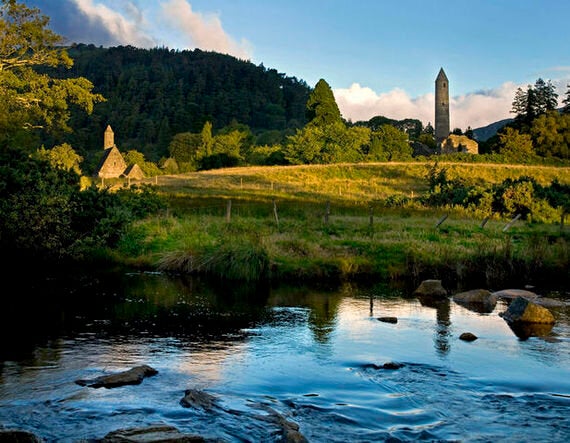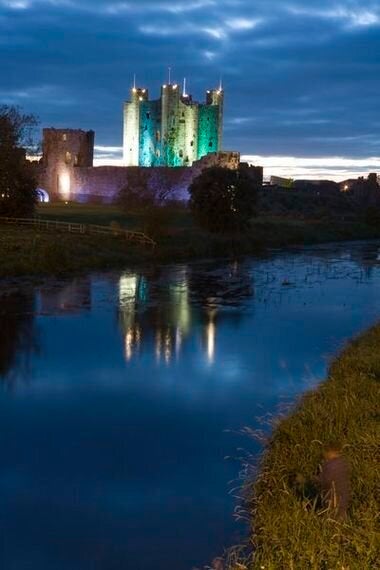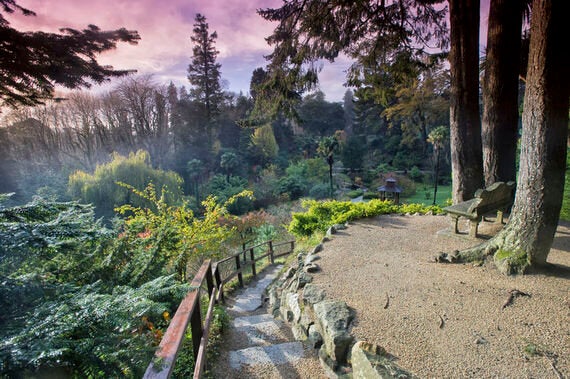Next month sees the release of The Lobster, which was filmed in Dublin and locations around county Kerry. The film starring Colin Farrell which won the Jury Prize at the Cannes Film Festival this year is not the only blockbuster located in Ireland to come out in 2015. Star Wars VII filmed on the dramatic island of Skellig Michael on the west coast will hit the screens in time for Christmas.
Today may well now be a golden age for Irish film and television, with the industry in 2015 worth several hundred million pounds. Long gone are the days when programmes depicting the Troubles, which began in 1969, were filmed overseas. Historically, the island's perceived remote location, lack of infrastructure and political situation conspired to keep the Irish film industy in the cold. Today, however, the region is basking in the glory of a string of cinematic and television successes that have been filmed on its shores.

Game Changer
Although international box office success, such as Ryan's Daughter (1970) had been shot on location on the remote Dingle Peninsula and thrust the Republic of Ireland onto big screens around the world, it is only in recent years that Northern Ireland has been able to bask in a similar kind of glory. The filming of the blockbuster, Game of Thrones, has propelled Northern Ireland onto the world stage, creating nothing short of a rebrand of the region. The success is such that a whole new breed of visitors, nicknamed 'throners', is flooding into Northern Ireland to visit the real life TV locations. Experts are even predicting that the series will do for Northern Ireland what Lord of the Rings did for New Zealand.
Places of Pilgrimage
North
Themed tours have sprung up in Northern Ireland, catering to the vast numbers of 'Throners' from around the world. They are flocking to the region to visit County Antrim and the Causeway Coast area, including Downhill beach where the old gods burn on the beach, locations for dozens of memorable scenes in the cult TV show. They are creating a much-needed injection into the Northern Irish tourist industry, particularly as so many of the locations are scattered all along the coast.
South
Braveheart starring Mel Gibson may have told the story of Scotland's greatest hero, William Wallace, but was filmed in County Wicklow, Meath and County Dublin. By contrast, those for historical drama Vikings can pretty much be visited on a day's walk along the Wicklow Way, which takes in Loughs Tay and Dan. The production also had a base at the increasingly popular Ashford Studios outside Dublin. Most of the filming for the fictitious location of Craggy Island in Father Ted was done in County Clare. The real version of the now legendary Parochial House, is a popular place of pilgrimage for fans. Other scenes were shot on the Aran Islands, which now host one of the world's most ridiculous festivals, Tedfest. The Giant's Causeway, along with the wild expanse of Divis Mountain, and the Italian Garden of Mount Stewart, which doubled as Dracula's Castle were just a few of the Irish locations for the 2014 film, Dracula Untold.

An Animated Industry
In the 1980s the success of animated films by director Don Bluth, including All Dogs go to Heaven (1989) was such that they were said by some to rival Disney's cartoons. After an extended hiatus, the Secret of Kells, based on fictitious account of the creation of the Book of Kells, was nominated for an Academy Award in 2010. It was the work of Kilkenny-based animation studio Cartoon Saloon who went on to be nominated for an Oscar for its animated film Song of the Sea, based on the ancient Celtic myth of the selkie.
Open Doors
Ireland's extraordinary variety of landscapes that are easily accessible within a compact area, sustained investment and significant tax breaks have all conspired to ensure the continued success of the TV and film industries in Ireland. Two new studios are planned for the Titanic Quarter in Belfast, which will consoldidate the city's position as one of the largest film production centres in Europe. In 2014, The NI Screen announced its four-year 'Opening Doors' strategy to support the local TV and film industry. The name is an allusion to CS Lewis who was inspired by the Irish countryside to write about the magical land of Narnia and a homage to Irish and the world of imagination.
